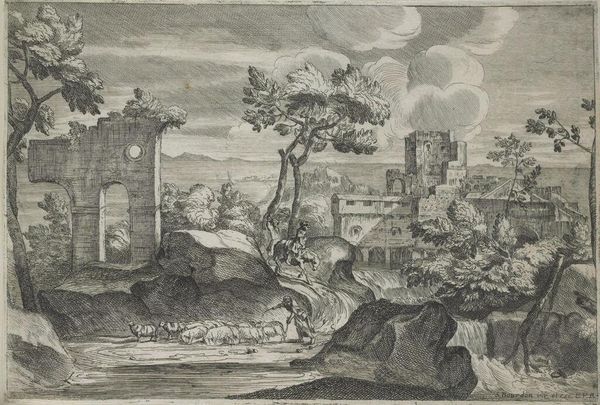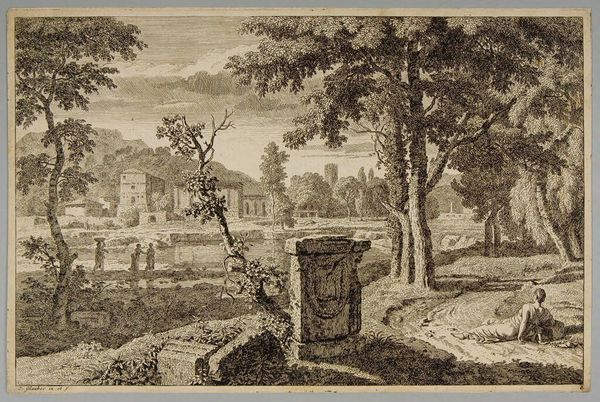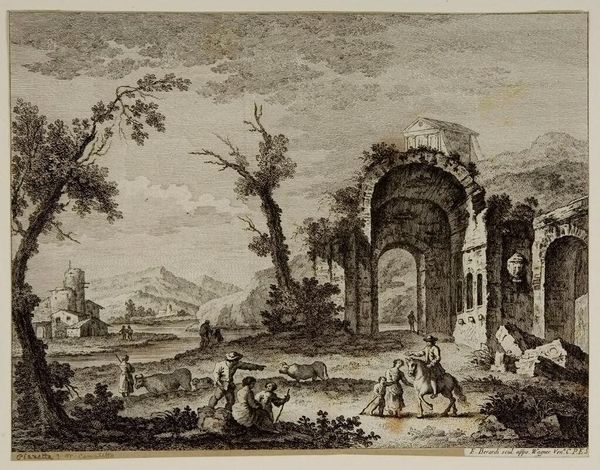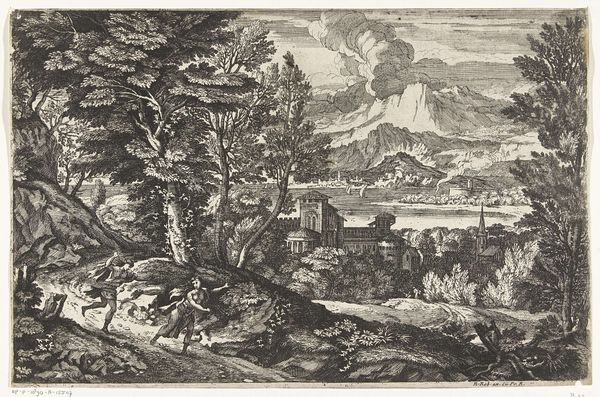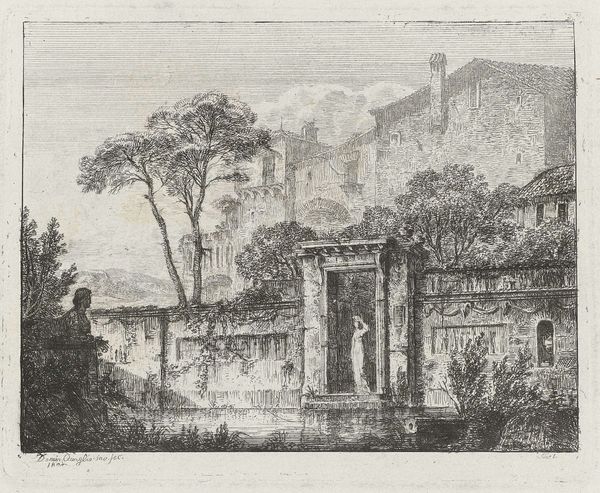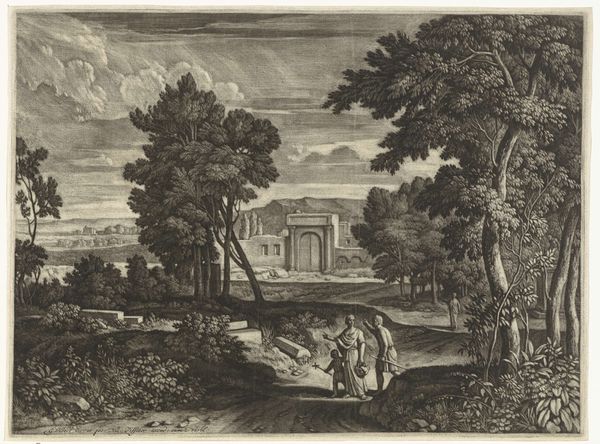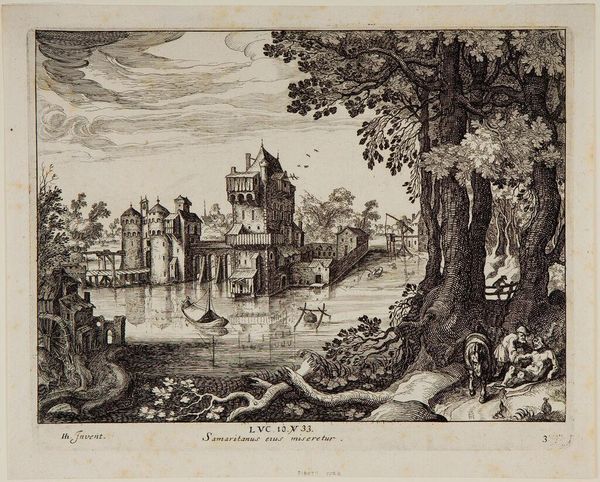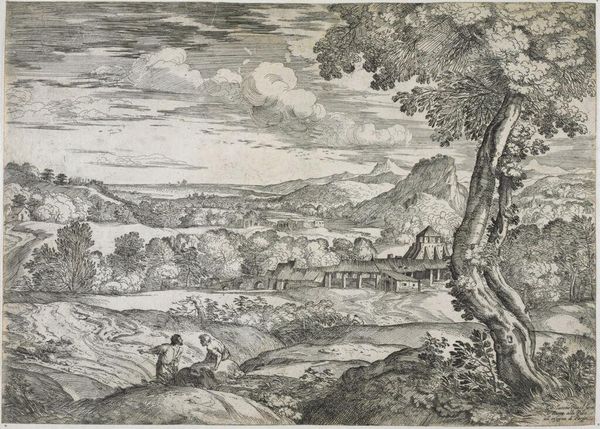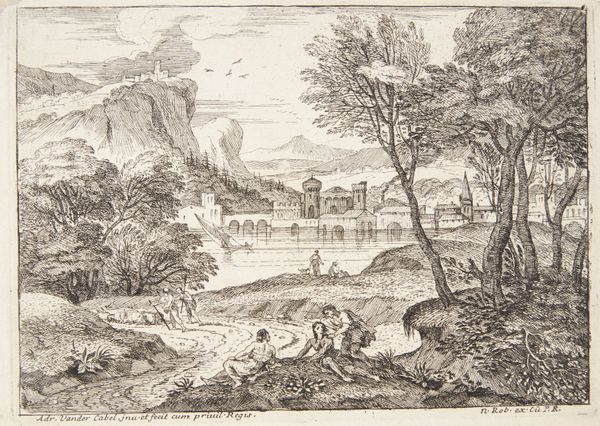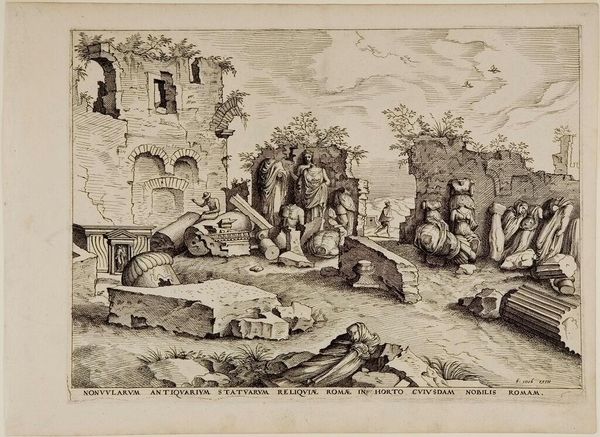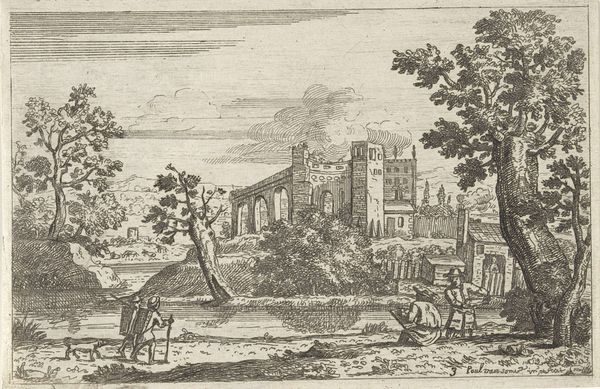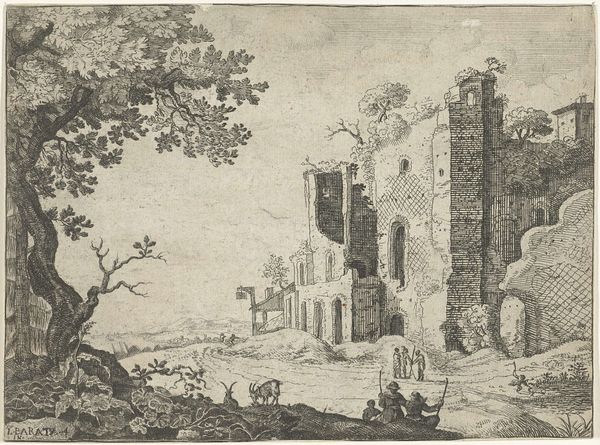
oil-paint
#
baroque
#
oil-paint
#
landscape
#
river
#
figuration
#
oil painting
#
water
#
cityscape
#
history-painting
#
italian-renaissance
Copyright: Public domain
Curator: Look at this remarkable oil painting by Annibale Carracci, entitled "Römische Landschaft" or "Roman Landscape," created around 1600. Editor: Immediately, I’m struck by the sense of classical calm, almost like a stage set. The light seems to diffuse, creating a mood of serene timelessness. Curator: The architecture does dominate, doesn't it? It evokes that specific sense of ordered civilization characteristic of idealized Renaissance interpretations of the antique world. But that’s classic Carracci—blending observed reality with imagined ideal forms. Notice the almost geometrical layout? Editor: Exactly. The painting functions less as a straightforward representation and more as a meditation on power and history. It’s about visual vocabulary, using imagery to construct specific narratives of legitimacy. Do you agree that the structure could almost represent boundaries, creating divisions between social classes? Curator: Possibly, though I interpret its placement more as a re-establishment of stability after periods of social upheaval. Consider how this imagery circulated amongst elite audiences—the river, figures, architecture; all signifiers meant to convey cultural inheritance and unbroken tradition. Editor: And what about those small figures placed rather low in the composition? Their inclusion normalizes inequality; these tiny people reinforce the power held within those tall stone edifices. I can't help but wonder who they really represent. Curator: Their insignificance reinforces, rather, a harmonious cosmos with humanity taking its due place, as the period envisioned. It’s the landscape reflecting both the real and the ideal. The symbolic function matters above the specifics of their social reality. It’s a painted idea as much as anything else. Editor: I concede, perhaps their presence isn't wholly an oversight. The classical vocabulary reinforces its ideas on both visible and subconscious levels. In short, though initially appealing for its tranquility, Carracci's painting opens itself to conversations far beyond simple pleasant aesthetics. Curator: Indeed. These idyllic scenes speak of grand social designs which are more complex under closer consideration, don't they? Thanks to our deeper dive, I'm seeing more that intersects the present moment in exciting ways!
Comments
No comments
Be the first to comment and join the conversation on the ultimate creative platform.
